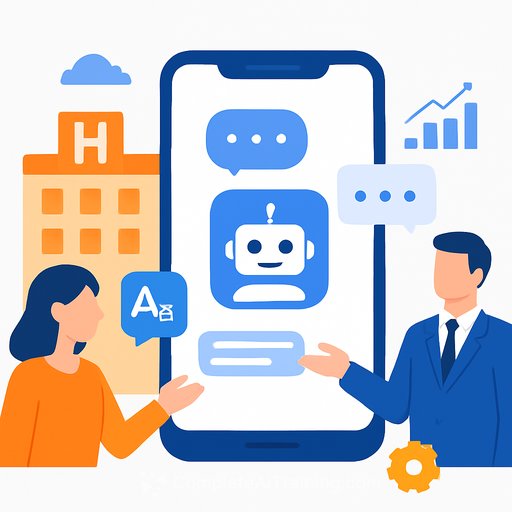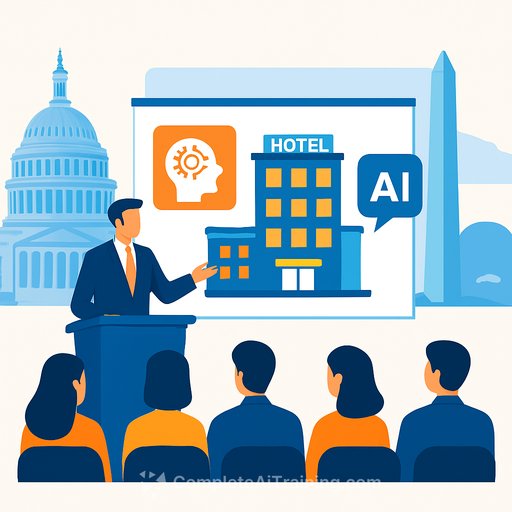AI, Analytics, and Automation: The New Playbook for High-Stakes Catering
Catering has always been about precision, timing, and service that feels effortless. From lavish weddings to high-volume corporate programs, success comes down to logistics that meet guest expectations-without friction. That alignment is now driven by AI, real-time analytics, and automation. These tools aren't extras anymore; they're the baseline for staying competitive.
The Stakes in Middle East Hospitality
In the Middle East, hospitality carries cultural weight and commercial pressure. Global conferences in Dubai and multi-day weddings in Saudi Arabia leave no room for error. Tech isn't just about efficiency here-it protects reputation and enables scale.
Chef Gregoire Berger, chef and founder of Kraken and Monarch Events, sees a shift toward niche, luxury experiences as brands look for differentiation. He notes that while tech can create standout moments, some features can feel like novelties. "We evolve, but we keep tradition: humanity and the touch of the artisan are essential."
From Guessing to Forecasting: Smarter Menus, Less Waste
Historically, caterers leaned on gut feel and spreadsheets. Now, AI can forecast demand by analyzing past orders, event formats, seasonality, and cultural calendars. That means the right menu mix, accurate quantities, and fewer last-minute scrambles.
The outcome: lower food waste, cleaner purchasing, and better margins. It's good business and good stewardship. If you want the bigger picture on why waste reduction matters, see the UNEP Food Waste Index report here.
Streamline Functions: From ERP to Floor Plans
Elias Kandalaft, founder and CEO of Pinch Gourmet, puts it plainly: tech gives teams confidence at scale. "Customer preferences and unique demands can be input into the system and traced on a floor plan, enabling caterers to pinpoint where the customer is sitting and what their preferences are. Ordering can be narrowed down to the gram as it builds on available inventory, reducing over-ordering and inefficiency."
He adds, "We've been able to streamline a lot of back-end functions that traditionally consumed time. For example, our digital ordering and inventory systems automatically track ingredient usage and flag reorders, reducing the need for manual stock checks. Additionally, ERP transformed the sales process by providing the team with instant access to numerous recipes and menus. These integrations have sped up operations and allowed us to create tailor-made events more efficiently."
Real-Time Operations: See It, Fix It, Keep Service Smooth
Events are live systems. Dashboards now surface inventory levels, staff performance, and service bottlenecks as they happen. If a signature dish runs low, the kitchen gets flagged instantly. Teams can replenish, swap, or redirect staff before guests feel a slowdown.
Automation That Gives People Their Time Back
Automation isn't just for factories anymore. In catering, it covers repetitive prep tasks, ordering, billing, and even parts of production kitchen workflows. The payoff is simple: staff spend less time on admin and more time on hospitality-greeting guests, reading the room, personalizing service.
Upskilling: Tech Works When Your Team Can Use It
Software alone won't fix service. Teams need data literacy-reading dashboards, managing connected systems, and making decisions in the moment. The best operators blend digital tools with sharp instincts.
Chef Luma Makhlouf, co-founder of Maiz Tacos, Luma's Cakes, and Good Burger DXB, shared how her teams use tech: "We've automated areas like inventory tracking, logistics scheduling, and CRM workflows. These tools significantly reduce the repetitive administrative work on the team's plate, allowing them to spend more time with guests, upselling, customizing, and creating personalized experiences."
She stresses the importance of CRM and POS at volume: "When you're catering for thousands of guests, technology needs to handle the same weight as your service team. That means seamless checkouts, quick order processing, and accurate guest data. At the same time, technology should never overshadow hospitality-it should make the guest experience smoother, not colder."
Stasha Toncev, Chief Soul Kitchen Officer at 21 Grams, Piehaus, and Etar Catering, has a similar stance: teams must step up, train, and protect quality across every process. "Machines won't replace our brains, but they can surely support our resource planning and save our precious time from repetitive tasks." She adds, "Digital tools are essential if you want to scale, whether it's CRM systems, payments, or logistics software. However, catering remains one of the most personal areas of the food and beverage industry. While I believe every caterer needs basic digital literacy to grow, I don't think it will ever outweigh culinary and human skills."
Looking Ahead
Chef Luma sees a place for robotics in production kitchens-heavy prep, protein processing, large-batch cooking, or reheating. The service side, though, stays human. Connection and trust are hard to automate.
The real question for operators in the Middle East and beyond is speed of adoption. Costs, training, and data security are real hurdles. Teams that face them directly are setting the table for stronger, more resilient operations.
Practical Next Steps for Hospitality and Events Teams
- Audit your workflow: forecast, purchasing, prep, service, breakdown. Identify 3 time sinks and 3 quality risks.
- Build your data foundation: connect POS, CRM, and inventory. Standardize SKUs and units across systems.
- Start with one forecast: pick a high-volume event type and predict top 10 dishes plus quantities by headcount and season.
- Create a live ops dashboard: inventory on hand, dishes at risk, staff allocation, and guest feedback signals.
- Pilot small automation: batch prep, labeling, or invoice automation. Measure hours saved and error rate.
- Train weekly: 30-minute huddles reviewing dashboards, exceptions, and decisions made.
- Protect data: role-based access, vendor NDAs, and a basic incident plan for POS/ERP outages.
Upskill Your Team
If you're building digital skills across roles-chefs, ops, sales, service-these curated learning paths can help: AI courses by job.
Your membership also unlocks:






